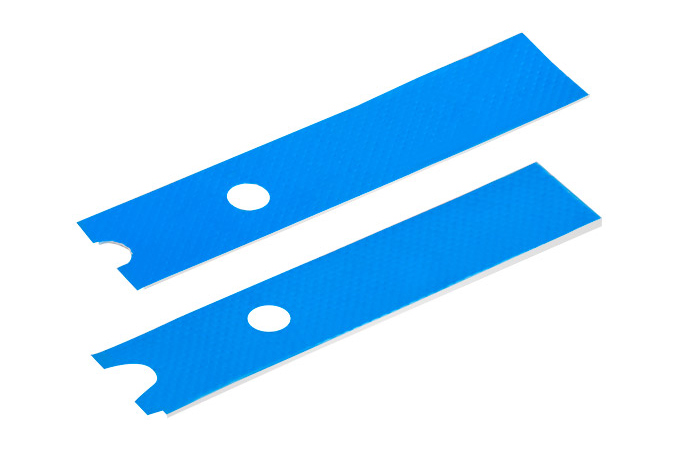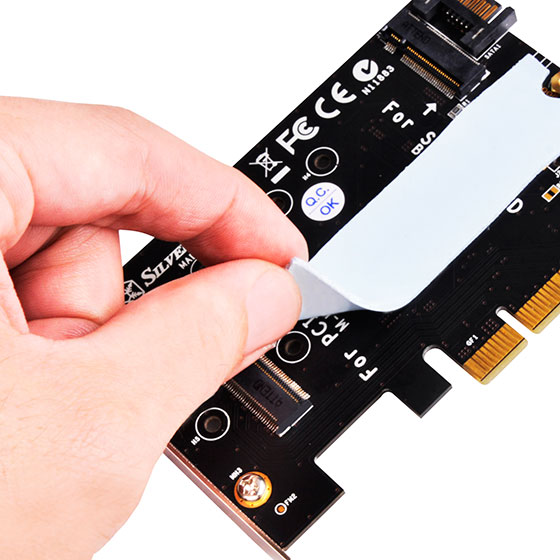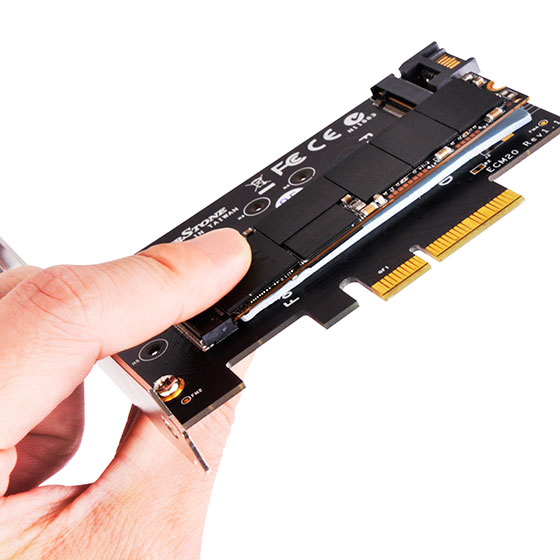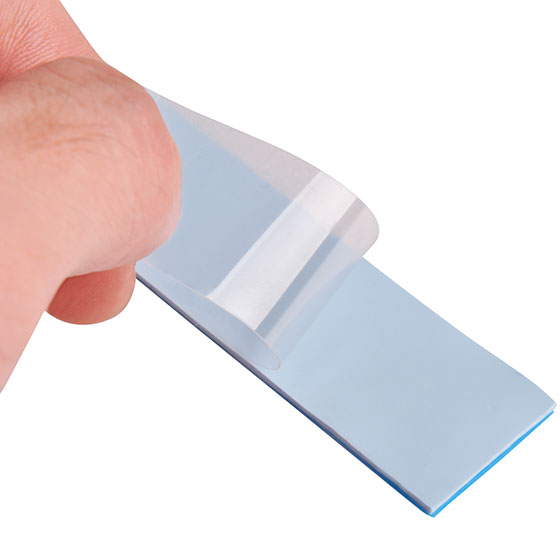SilverStone Launches SST-TP01-M.2 Thermal Pads for M.2 SSDs
by Anton Shilov on February 23, 2017 5:00 PM EST- Posted in
- Cases/Cooling/PSUs
- Storage
- SSDs
- SilverStone
- cooling
- M.2

In a bit of offbeat news this afternoon, SilverStone has announced a set of thermal pads for M.2 SSDs, the SST-TP01-M.2. These pads are designed to eliminate (or at least reduce) throttling of modern, high-performance drives under high loads. The pads are made of silicone and Silverstone claims they can reduce temperature of SSDs by over 10°C.
M.2 SSDs have a number of advantages over drives in traditional 2.5” form-factor: they are smaller, they are faster (because they use the PCIe interface with the NVMe protocol), they are (sometimes) cheaper to make, and so on. However, one of the main drawbacks of higher-end M.2 SSDs is the high heat dissipation of their controllers (and memory chips) despite their small form factor, which can lead to thermal throttling and reduced overall performance. Manufacturers have been aware of this for a bit now and have been addressing it in a couple of different ways. Plextor, for example, installs aluminum heat spreaders on their M8Pe drives, whereas Samsung’s latest HDDs come with other types of heat spreaders. However since not all SSD suppliers equip their products with sufficient cooling, SilverStone has developed an aftermarket thermal pad that should work with most drives.
The SilverStone SST-TP01-M.2 thermal pads are made of electrically non-conductive silicone – a material that offers decent thermal conductivity (up to 4 W/m.k) – and can fit M.2 drives that are up to 110 mm long. The SST-TP01-M.2 package includes both 0.5 mm and 1.5 mm thick pads for accommodating different setups.
According to SilverStone, usage of the thermal pads can reduce temperature of Samsung’s SM951 SSDs from 86°C to 71.4°C under high loads, thus ensuring they operate at peak performance more often. The actual performance of SilverSone’s thermal pads will heavily depend on the SSD and the surrounding system – the heat still needs to go somewhere – but there's some potential here as silicone heatpads are by no means a new thing in PC hardware and have proven themselves to be useful.
SilverStone has already started to produce its M.2 thermal pads, and in Japan stores in the famous Akihabara district are already demonstrating them. Unfortunately, pricing has not yet been announced. But M.2 SSD owners who suffer from thermal throttling of M.2 SSDs will want to keep an eye on this.
Source: SilverStone













33 Comments
View All Comments
Bullwinkle J Moose - Friday, February 24, 2017 - link
Ninhalem says...."The solution is to move the pad to the top of the drive instead of between the drive and the PCB, so that the pad has access to more natural and forced convection."
---------------------------------------------------------------------------------------
The image above shows a VERY thick insulator which you now want to place on top of the SSD?
You will still be holding the heat in, but at the top instead of the bottom
Several DRAM modules use a sort of moneyclip type of heat sink I described above to good effect while others use a single (one sided) sink
The best solution is probably the easiest and best looking.....
wrap the M.2 SSD's with a metal "full contact" case at the factory to protect and cool the chips and start building motherboards that fully support them
Ninhalem - Friday, February 24, 2017 - link
I think you missed the part in the article where the silicone material in question is referred to as a conductor of heat. The material has a thermal conductivity rate of 4 W/m-K. The PCB on the other hand is in the vicinity of 0.3.edzieba - Friday, February 24, 2017 - link
Put one on the backside, and couple the SSD to the motherboard PCB, which is chock-full of copper planes. Stick one on the frontside, and couple it to the motherboard support plate. Either way, an m.2 SSD puts out a tiny amount of heat. Single-digit watts, not even hitting 5W at peak in Anandtech's testing.ddriver - Friday, February 24, 2017 - link
That's not true for NVME. Sub 5W chips do not need any cooling, and could not possibly overheat to the point of throttling back. The 512gb 950 pro has been measured to go over 7 watts.Samus - Friday, February 24, 2017 - link
This isn't a heatsink it is a heat spreader. This concept has been used for decades. And it works alright, it didn't going to reduce the temps to anywhere near ambient, but using the pcb as additional thermal surface area is a common application for TIM's (thermal insulation materials) because in most cases, pcb's just don't get hot because the heat producing components are, with the exception of videocards and the like, mounted off the pcb, especially riser cards like those m.2 SSD's will find themselves in. Yet pcb's tollorate heat pretty well.Gasaraki88 - Friday, July 14, 2017 - link
Actually Dell has been putting these pads on their SSDs without any heatsink on them. I guess it works on air cooling also.zodiacfml - Friday, February 24, 2017 - link
Ridiculous.siuol11 - Friday, February 24, 2017 - link
It's much better to get FujiPoly's xtreme cooling pads with similar dimensions (you can choose between .5, 1, and 1.5mm heights as well). Fujipoly's pads have a cooling capacity of 17w/m.K, which is over an order of magnitude more than these.Death666Angel - Friday, February 24, 2017 - link
"Fujipoly's pads have a cooling capacity of 17w/m.K, which is over an order of magnitude more than these."So, 17 is more than 10 times 4?
yannigr2 - Friday, February 24, 2017 - link
you can buy a 10x10 cm thermal pad for about 1-2 dollars on eBay. this one will probably cost 5 times more because of the Silverstone brand on it.